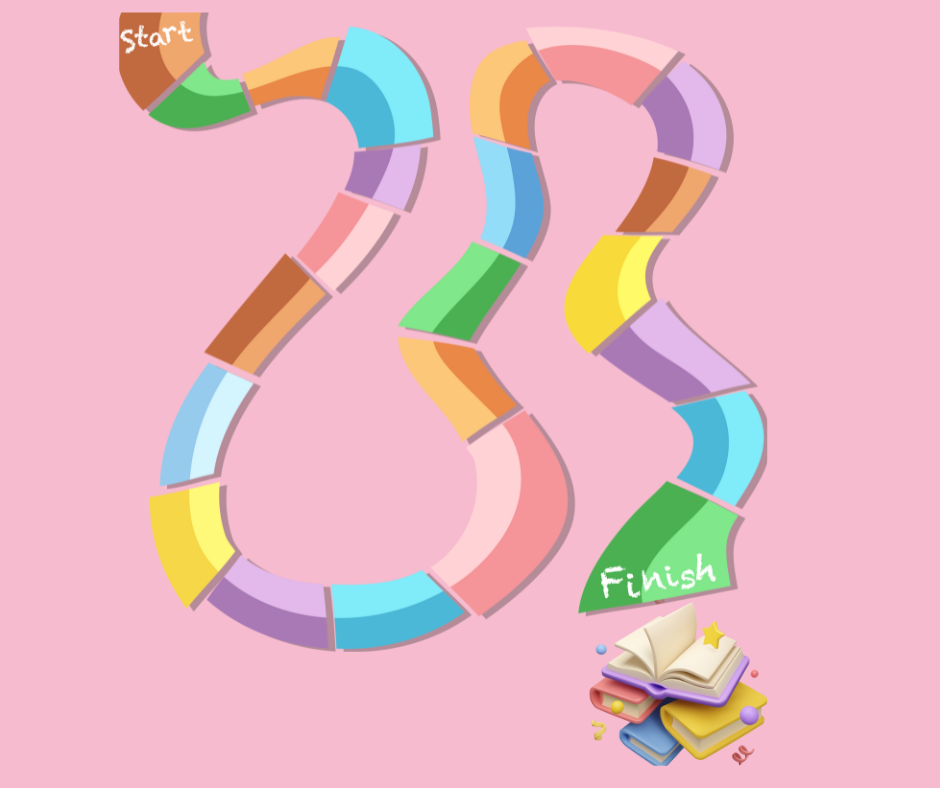Organizing a Romance Novel Writing Project from Idea to Bestseller

Writing and publishing a book seems like a fairly straightforward process. It’s only after you start your novel project that you realize there are many moving parts. Organizing thoughts and ideas. Revision. Editing. Publishing options. Queries, synopsis, blurbs, and loglines. Cover design. Launch plans. Marketing (a project in and of itself).
Not only do you need to complete all these tasks, but you have to do it within your time and resource constraints.
The good news is that it can be done. But to do it with minimal overwhelm and stress, you need a plan and a system.
I have found it much easier to keep track of my novels by treating them as projects. Within each project, I have all the notes and ideas, schedules, trackers, planners, etc. for each book. I basically plan out more than just the writing, but all tasks to get my book from idea to selling. Here’s how:
Creating Time and Space for Your WIP
Before you start writing, make the time and space to work on your novel. You don’t have to write copious amounts of words every day, but you can’t expect to write a novel in incidental pockets of free time available in your daily life. That means you need to create the time and schedule it in for your writing project. This can include the times you’re going to work on your novel, as well as what you’ll specifically do during those times, whether it’s writing a specific chapter, meeting a word count, or doing publishing or marketing tasks.
But you don’t just need time to write, you also need a place to write. Your writing space should be comfortable and well lit. Ideally, it should be away from distractions. The easiest way to get butt-in-chair is for your space to be readily available so that you can sit down at your allotted time and jump right into the work that you need to do. If you have to set up your writing location, you use up time that could be better spent working on your novel.
Define Your Writing Goals for Your WIP
Setting goals is easy. It’s achieving them that is difficult. The best way to achieve your goals is to have a plan.
Most goal setting experts suggest picking an end date and working backwards to fill in the due dates of very tasks related to the project. The same is true in your novel project. Decide a date that you’d like to publish your book, and then work backwards filling in deadlines for the various activities such as when you need to get your first draft completed, editing, formatting, and all the other tasks related to writing and publishing and marketing a book.
Setting your publishing date goal along with the deadlines for all the various activities, can help you determine how much writing you need to do and how often to meet your first draft deadline. For example, if you would like to publish your book in six months, you need to give yourself 3-6 weeks for pre-publishing marketing, 2 weeks for editing (or whatever your editor needs), time for book revisions after edits, time for cover design, and of course, time to write the book. If your timeline dictates that you need to get your book to the editor 3 months before publication, then you have 12 weeks to write, revise, and edit.
The nice thing about knowing how much time you have to write to meet your goal, means you can determine your daily or weekly wordcount. If you have 12 weeks to write 70,000 words, that means you need write 5,834 a week, or 833 words a day for seven days, 1167 words for five days a week. Is that doable for you? If so, awesome. If not, you need to rethink your end date for publication.
This might seem like a lot of busy work, but setting realistic deadlines and milestones with your project will help keep you on track.
Take Your Novel from Idea to Draft
Each writer is unique and how they take the kernel of an idea and turn it into a novel. Some tasks they might do include keeping notes and sketches about characters and setting, plotting or storyboarding, research, and the actual writing.
Again, there’s a lot going on here and ou need a system in which you can keep all these ideas, notes, plots, and your task lists organized. Some authors use notebooks. Others use Scrivener. I created my own system in which I corralled each book project into its own organizer.
Editing and Revising Your Manuscript
Once you have a completed first draft, it’s time to go through it, revising and editing as needed. The challenge is that there are so many things you need to look for during revisions and edits. You need to make sure that each scene has a purpose and is working to drive the story. You need to make sure the story flows and make sense. Are there any issues with the timeline, and are all the names consistent? You also need to beef up the quality of the prose by reducing or eliminating weak words, passive sentences, and choosing active verbs over adverbs. Then of course, there’s punctuation, spelling, and grammar.
Developing an editing and revising system and checklist was one of the first things I created for myself because there were so many things to consider during the process an inevitably something was missed. A revision checklist ensures I look for all possible issues.
Beyond editing and revision that you do, is editing by a professional editor you hire or with your publisher. If you plan to find a traditional publisher, you should still hire an editor, but short of that, use a tool like Prowriting Aid, Grammerly, or Autocrit to edit your book. Agents and publishers receive tons of submissions daily, which means you’re competing with many other authors for a coveted spot. Don’t let poor writing or typos impede finding a traditional publisher.
Formatting, Proofreading, and Preparing for Publication
Your book is written and professionally edited. If you’re working with a publisher, you can skip this and go right to marketing planning. If you’re self-publishing, now is the time to package your book for the end reader. This means formatting the book for whatever format you intend to sell it in. Ideally, you want to read it in its formatted state to ensure it looks write, as well as last chance to find errors in the words. But because you’re more likely to read what you intended and not what you wrote, this is a good time to have outside readers look at it.
Finally, prepare the book for publication, including ordering a cover, writing the blurb, and determining what marketplaces you’ll sell the book in.
Marketing
It would be nice if books automatically found their way to readers, but alas, the book marketplace is a crowded one.
First, it’s never too early to market your book. It doesn’t have to be written before you tell others about it. When you decide you want to publish is the time to begin marketing, starting by building your author platform. This includes building a website, starting an email list, and joining social media used by your target reader.
Next, figure out how you’re going to reach these readers. What sort of content are you going to create that speaks to them? Where will you post it?
Marketing is a ginormous topic and task that overwhelms many authors, me included. It’s why I include a launch checklist, marking content ideas, and a plan in my novel project organizer.
Ways to Organize Your Author Project
Organization and planning isn’t one-size-fits all. You have to find the tools and systems that work for you. Here are a few you can try:
- School notebook: These have places to keep notes and ideas, paste images, sketch drawings, outline and more. Some have pockets where you can store other papers.
- Binder: This works like a school notebook, but is sturdier and gives you some customization in terms of type of paper (e.g. lined or grid), and other inserts such as dividers or pockets. It’s easy to punch holes in other papers to add to a binder as well.
- Notion: I love this app as it does so many things. For a while I used it for my writing projects, and while I still use it for some things, I know use my own paper system. Notion has a database system that you can set up like a Kanban board or spread sheet to track your project. You can create a novel project template that you can use for each book that allows you to store notes, research, pictures, and track tasks.
- Scrivener: I’ll be honest, I’ve tried Scrivener so many times and just haven’t been able to get it to work for me based on how I work. But it does have cool bells and whistles to store notes and research, pictures, outlines, character sketches and more. YOu can find free templates for romance and other genres (members have access to Write with Harte’s Romance Scrivener Template on the Freebies page).
- Google Drive: This is a storage space, but with in it, you can store docs, spreadsheets, pictures, websites and more.
- The Romance Author’s Novel Organizer:
 Okay, so this is blatant self-promotion, but the Romance Author’s Novel Organizer is what I use to manage my novel writing projects. It covers the entirety of a project from idea to premise to plotting to characters to writing schedule to revising/editing to publishing to marketing. It’s over 120 pages of information, tips, worksheets, checklists, trackers, plotters, planners, notes, sketches, storyboards and more.
Okay, so this is blatant self-promotion, but the Romance Author’s Novel Organizer is what I use to manage my novel writing projects. It covers the entirety of a project from idea to premise to plotting to characters to writing schedule to revising/editing to publishing to marketing. It’s over 120 pages of information, tips, worksheets, checklists, trackers, plotters, planners, notes, sketches, storyboards and more.
I grab one for each project and it keeps everything…all my ideas, schedules, to-dos, and more for each book.
The Romance Author’s Novel Organizer is available in print at Amazon.com or you can get a digital PDF version that you can download and print in the Write with Harte/Jenna Harte shop.
Getting a book from idea to the marketplace is a big project with many small moving parts. Having a system to keep it all organized will keep you on task and on pace to meet your publishing goals.
Do you have other ideas on how to stay on top of all the tasks in writing, publishing, and marketing a romance novel? Let me know in the comments.







Responses